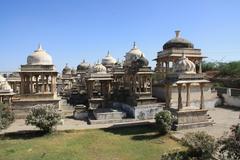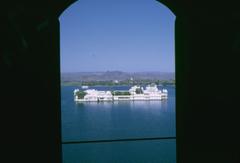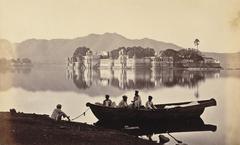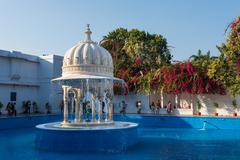Comprehensive Guide to Visiting Jagdish Mandir in Udaipur, India
Date: 17/07/2024
Introduction
Table of Contents
- Introduction
- A Royal Vision Brought to Life
- Indo-Aryan Splendor - An Architectural Marvel
- Symbolism and Significance
- Visitor Information
- Special Events and Guided Tours
- Photographic Spots
- A Legacy in Stone
- FAQ
- Conclusion
Exploring Jagdish Mandir - History, Architecture, and Visitor Guide
Introduction
Jagdish Mandir stands as a testament to the rich history and architectural prowess of the Mewar kingdom in Udaipur, India. This guide provides a detailed look at its history, architectural marvels, and practical visitor information.
A Royal Vision Brought to Life
Indo-Aryan Splendor - An Architectural Marvel
Key Architectural Elements
The Majestic Shikhara
The temple’s most striking feature is its towering main shikhara, a pyramidal structure that rises in tiers, adorned with intricate carvings of deities, musicians, and dancers. This central tower is symbolic of Mount Meru, considered sacred in Hindu cosmology.
Ornate Mandapas
The temple features several mandapas, each serving a specific purpose. The largest, the Sabha Mandapa (assembly hall), is where devotees gather for prayers and religious discourses. The Jagmohan (prayer hall) leads to the inner sanctum, and the Natya Mandapa (dance hall) was used for ceremonial dances and performances.
Exquisite Sculptures
Every surface of the temple, both inside and out, is lavishly adorned with intricate sculptures. These sculptures depict scenes from Hindu mythology, showcasing gods and goddesses, celestial beings, and various flora and fauna. The level of detail in these carvings is a testament to the skill of the artisans.
Guardian Elephants
Flanking the main entrance are two large, sculpted elephants, serving as symbolic guardians of the temple. These elephants, carved from single blocks of stone, add to the grandeur of the entrance and represent strength and auspiciousness.
Symbolism and Significance
Beyond its architectural grandeur, Jagdish Mandir holds deep religious and cultural significance. The temple is a living testament to the enduring faith of the people of Udaipur and continues to be a place of active worship. The intricate carvings and sculptures narrate stories from Hindu mythology, serving as visual reminders of the faith’s rich tapestry. The temple’s central deity, Lord Vishnu, represents the preserver of the universe, signifying balance and harmony.
Visitor Information
Visiting Hours
The temple is open daily from 5:00 AM to 10:00 PM. Early morning is a serene time to visit, while the evening aarti (prayer ceremony) offers a unique spiritual experience.
Ticket Prices
Entrance to the temple is free, but donations are welcomed to help with maintenance and rituals.
Travel Tips
- Wear modest clothing as a sign of respect.
- Shoes must be removed before entering the temple.
- Photography is allowed but be mindful of worshippers.
Nearby Attractions
While in Udaipur, don’t miss the City Palace, Lake Pichola, and the Saheliyon Ki Bari gardens, all within close proximity to Jagdish Mandir.
Accessibility
The temple is accessible via a flight of stairs, which might be challenging for those with mobility issues. However, the area around the temple is wheelchair accessible.
Special Events and Guided Tours
Jagdish Mandir hosts several festivals, with Janmashtami and Diwali being the most celebrated. Guided tours are available and highly recommended to fully appreciate the temple’s history and architecture.
Photographic Spots
Capture the temple’s grandeur from the raised platform, the intricate carvings up close, and the vibrant aarti ceremonies. These spots provide excellent opportunities for photography enthusiasts.
A Legacy in Stone
Jagdish Mandir is not merely a structure but a chronicle etched in stone, narrating tales of devotion, artistry, and the enduring legacy of the Mewar dynasty. It stands as a beacon of faith and a testament to the architectural brilliance of a bygone era, continuing to inspire awe and wonder in all who visit.
Frequently Asked Questions (FAQ)
Q: What are the visiting hours of Jagdish Mandir? A: The temple is open daily from 5:00 AM to 10:00 PM.
Q: Is there an entrance fee? A: Entrance is free, but donations are appreciated.
Q: Are guided tours available? A: Yes, guided tours are available and recommended.
Q: What nearby attractions can I visit? A: Nearby attractions include the City Palace, Lake Pichola, and Saheliyon Ki Bari gardens.



